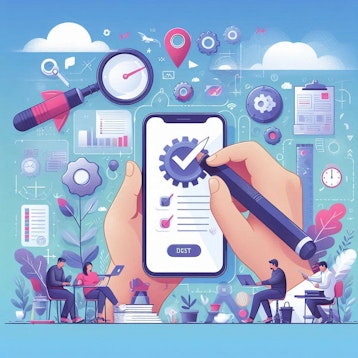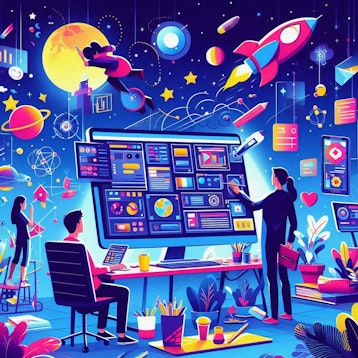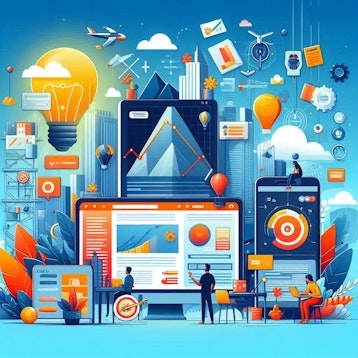The software-as-a-service (SaaS) model has skyrocketed in popularity in the last few years as it continues to offer cutting-edge solutions in a wide array of industries. As the competition among SaaS products continues to grow, so do customer expectations.
A recent study published by Price Intelligently indicates that SaaS products that hit the market in 2015 had an average of 2.6 competitors. Five years later, this number skyrocketed to 9.7.
In order to gain some competitive edge, many businesses now adopt a variety of modern technologies ranging from AI to low-code development and beyond. In this article, we’ll take a closer look at the latest trends in SaaS and what the future holds for this service model.
1. Artificial Intelligence
Surprise, surprise! I bet you've seen this one coming. AI has taken the tech world by storm, and the SaaS industry is no exception.
Artificial intelligence (AI) is one of the most important innovative technologies that will most probably bring disruptive change to the SaaS model. One of the more important benefits that AI brings to the table is hyper-personalization, which will allow to satisfy customer needs in B2B, B2C, or DTC markets.

But there’s much more to it. Some of the other use cases for AI in SaaS are:
High-quality support services like chatbots, etc.;
Easier code review and maintenance;
Security breach identification;
Advanced user guidance and SaaS onboarding;
Dynamic pricing (check out the product design we did for Th!nkPricing);
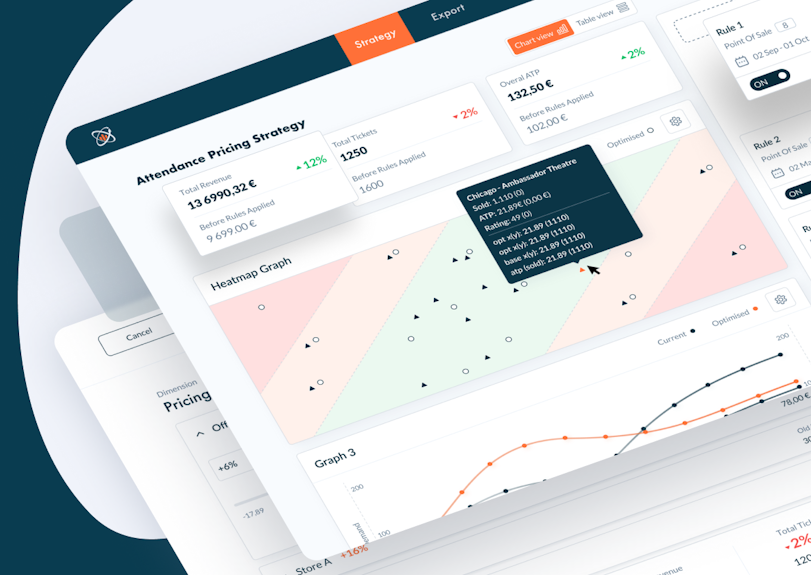
Product Design For an AI-Based SaaS Solution
Take a look at a case study we did on Th!nkPricing, an AI-based dynamic pricing tool.
See Case Study2. Machine Learning
Machine Learning (ML) and AI are often used interchangeably, and that’s somewhat incorrect. Machine Learning is a subset of artificial intelligence that focuses on learning capabilities and processing data.
Some of ML most important use cases in SaaS are (but not limited to):
Allowing platforms to learn about customers’ preferences and habits, enabling businesses to make their products more usable and intuitive;
Processing large amounts of contextual data and insights to help companies to optimize their offering and market positioning;
Optimizing internal collaboration and operations;
Increasing customer engagement;
Ensuring superior data security via advanced pattern recognition;
A great example of a SaaS product that leverages the power of machine learning is Salesforce. One of the world's leading and most powerful CRM's helps detect patterns in customer behavior that would otherwise go unseen by the sales team. Additionally, the app suggests the next steps for salespeople based on the data the app aggregates.
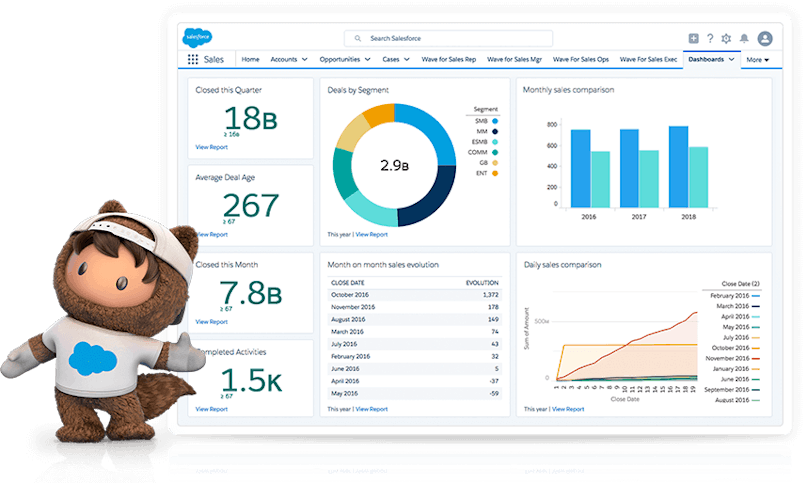
3. Integrations
In the early days of SaaS, there were no integration solutions. Products and services couldn’t be merged. As a result, customers were supposed to appeal to third-party solutions, which wasn’t at all appealing for both users and institutions, especially the ones that weren’t ready to migrate their entire data to a cloud platform like AWS.
However, more and more SaaS vendors tend to provide greater integration capabilities, which entices businesses that prefer a hybrid system that combines a cloud back-end and on-premise system.
Integrations in SaaS are also because they allow eliminating a substantial part of human error via partial automation of processes. Products like Zapier are a great example of such seamless automation—the tool can comfortably merge a wide array of platforms, from CRMs to email clients and beyond.
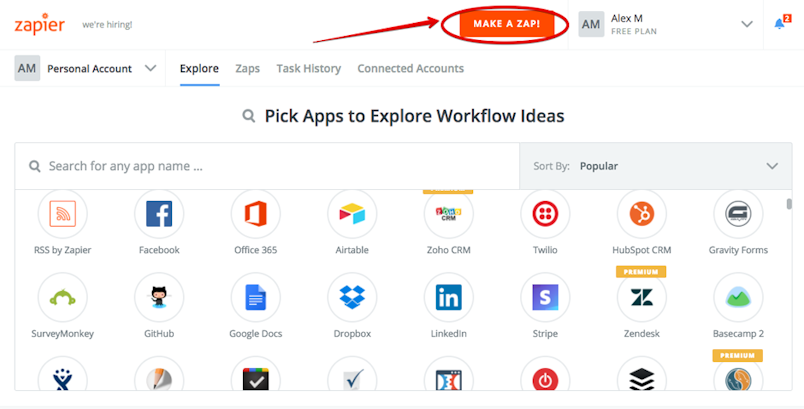
4. Micro SaaS
As we’ve mentioned previously, the competition on the SaaS landscape is now fiercer and more abundant. As a growing number of players enter the market, we begin to see many companies that strive to adapt and have a more innovative and creative approach to providing their customers with services.
One way of adapting to this competitive environment is to create smaller, more flexible products, which are often run by very small teams or even a single person. Micro SaaS products are often extensions or add-ons to larger products that aim to optimize the experience for particular industries.
Because such products are lower risk and are relatively inexpensive to run, we might see a substantial boost in the number of micro SaaS products, especially the ones aiming to serve narrower customer groups and niches.
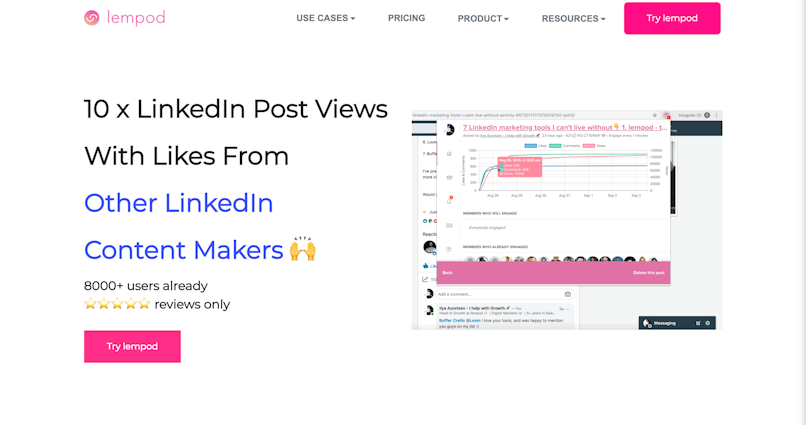
Lempod is a good example of a micro SaaS. The app does just one thing – it boosts your organic reach on LinkedIn.
Other examples of thriving micro SaaS apps include Everhour (a time tracking app), Mealime (a meal-planning app), and Complice (a planning app).
5. Everything goes mobile
As the world is gradually moving into a more mobile-first era, we’ll certainly start seeing more SaaS products heading in the same direction. This, of course, comes with a wide array of challenges, especially in the design side of things—creating interfaces that will accommodate neurodiverse and senior users, as well as people that are suffering from sight and hearing impairment.
The areas that are projected to see most attention in 2022 are:
Improved accessibility features;
Enhanced mobile personalization;
AR and VR-based immersive mobile experiences;
Enhanced responsivity, gesture design, and ML-based intuitive filtering abilities;
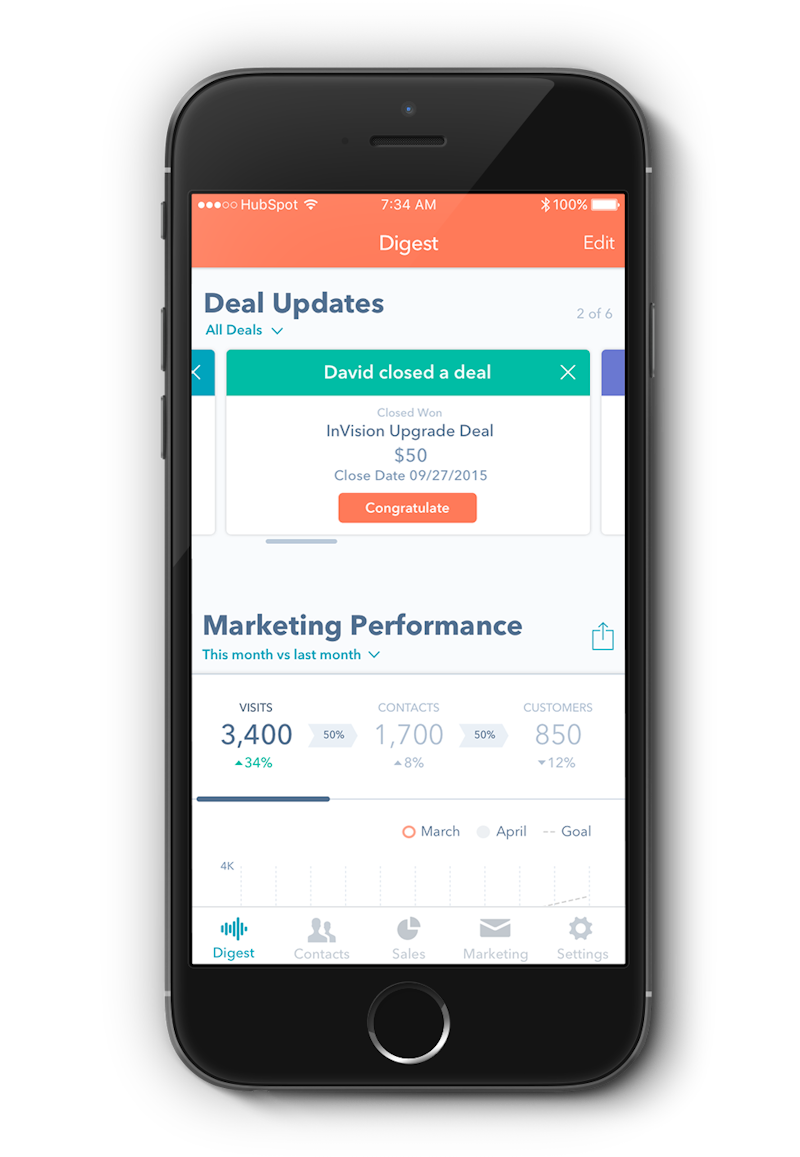
An example of a mobile version of a primarily web SaaS platform – HubSpot. Source.
6. Low-code apps
No-code and low-code development platforms have been on everyone’s radar for the last few years, and the SaaS industry is no exception. Given that low-code platforms are significantly more accessible to the average person, they allow less “techy” startups and individuals to enter the scene, thus allowing to diversify the market.
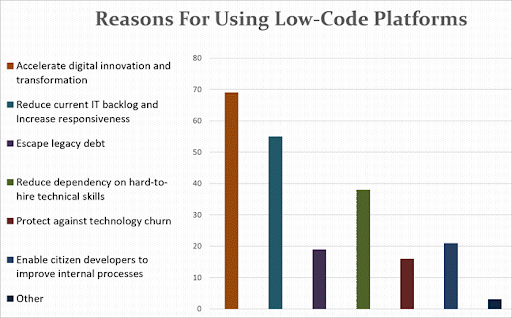
This overwhelming accessibility comes with a host of other benefits. Less code implies lower costs, which means that developers, designers, and product executives can spend more time and money on innovation and addressing the industry’s more pressing issues. Similarly, low-code platforms will allow startups to create quick MVPs, enabling them to test more solutions at a faster pace.
Some of the famous low-code app examples include Zapier, Airtable, Webflow, and Typeform.

7. Vertical SaaS
The fundamental difference between horizontal and vertical SaaS is their focus. The former, as the name suggests, provides solutions to a wide array of industries. At the same time, the latter is a product that aims to cater to a narrower audience, typically within a single niche.
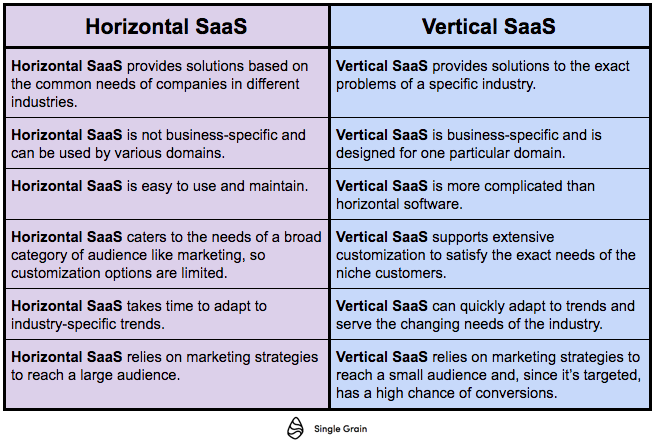
Vertical SaaS is a comfortable and cost-effective solution for many businesses, given the industry-tailored solutions. This enhanced flexibility will ensure greater revenue and lower expenses on customer acquisition.
Some of the notable examples of a vertical SaaS include BioIQ (medical sphere), Guidewire (insurance), Innovacer (healthcare).
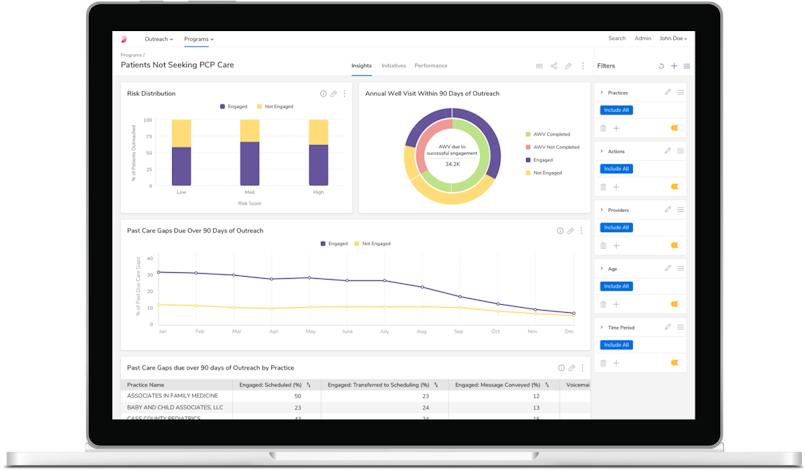
Vertical SaaS also applies to seemingly broad use cases but within niches that cannot extract optimal value from more generic platforms, such as marketing. For instance, in the case of dentistry it makes sense to select a marketing platform that is perfectly pitched to grow your dental practice, covering everything from SEO and content to reputation management, all with an industry-specific twist.
This trend is only set to spread in the coming years, since it is getting easier for SaaS vendors to create vertical products like this, without incurring costs that make doing so hard to justify from a financial perspective.
8. Subscription Model Evolution
The traditional SaaS subscription model is undergoing a period of significant transformation. Usage-based pricing is emerging as a viable alternative, offering customers greater flexibility by aligning costs with actual consumption.
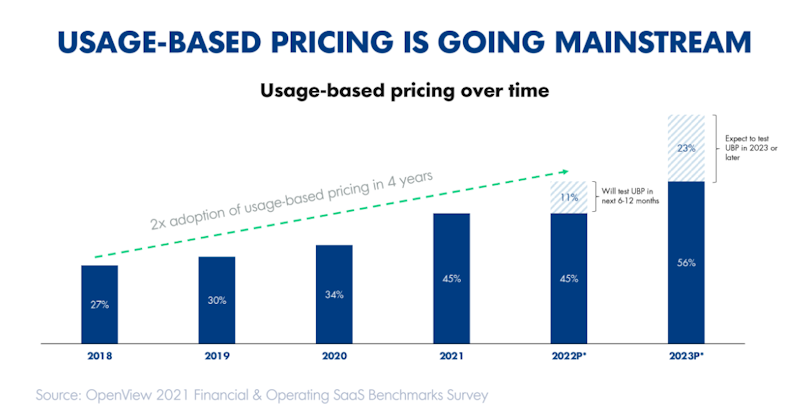
However, Freemium models persist as a popular acquisition strategy, providing a pathway for users to experience core functionalities before upgrading to premium tiers. Furthermore, we will continue to see SaaS providers increasingly experimenting with tiered subscription plans to accommodate diverse customer needs and optimize revenue generation.
9. Cybersecurity Solutions for Emerging Threats
The threat landscape for SaaS applications is also evolving, with cybercriminals becoming increasingly sophisticated. Ransomware attacks, phishing scams, and data breaches continue to be significant concerns. Additionally, we see emerging threats like supply chain attacks and cloud misconfigurations presenting new challenges.
One way to mitigate these risks is for SaaS providers to adopt a proactive security posture. This involves implementing robust access controls, encryption, and data loss prevention measures. Regular security audits and employee training are essential practices as well. Moreover, we will see the use of advanced technologies such as artificial intelligence and machine learning becoming more prevalent to detect and respond to threats more effectively.
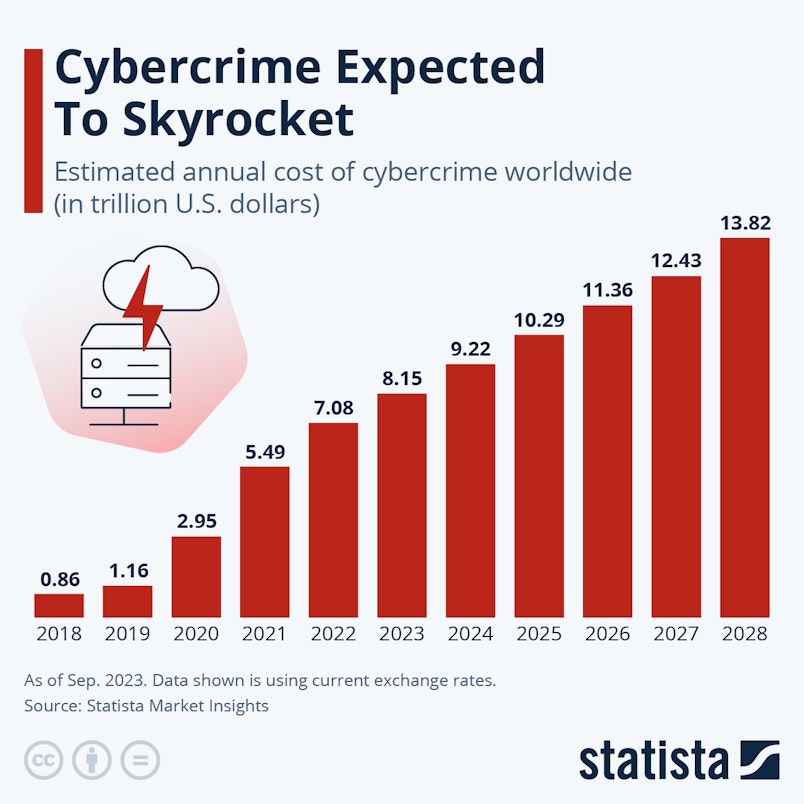
Source: Statista
Prioritizing security and privacy will enable SaaS companies to build trust with customers and protect their reputations in this competitive landscape.
10. Efficient Customer Acquisition
AI has quickly changed how businesses approach customer acquisition. With the ability to analyze vast amounts of data, AI-powered tools help examine customer behavior, preferences, and demographics to develop highly targeted marketing campaigns. This level of efficiency not only enhances the customer experience but also boosts the likelihood of conversion.
One area where we see AI making a significant impact is customer segmentation. By dividing customers into distinct groups based on shared characteristics, SaaS companies can tailor their messaging and offerings to specific segments. This approach leads to more effective campaigns and maximizes return on investment.
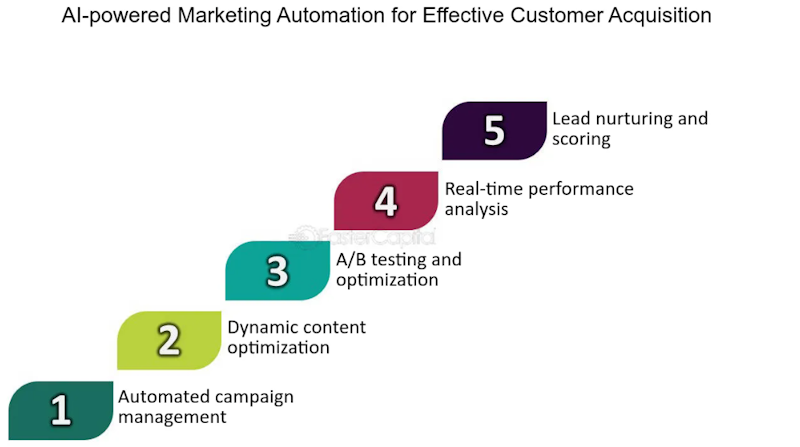
11. Modern Performance Metrics
Tracking the right metrics is essential for understanding the health of a SaaS business. While traditional metrics like customer acquisition cost (CAC), customer lifetime value (CLTV), and churn rate remain crucial, new metrics are emerging to provide deeper insights.
Emerging Metrics:
Product Qualified Leads (PQLs): Leads that have demonstrated product engagement and are more likely to convert.
Qualified Lead Velocity Rate (QLVR): The speed at which leads move through the sales pipeline.
Free-to-Paid Conversion Rate: The percentage of free users who upgrade to a paid plan.
Time to Value (TTV): The time it takes for a customer to realize the value of the product.
Feature Adoption Rate: The percentage of users who adopt new features.
Customer Health Score: A composite score indicating customer satisfaction and engagement.
By carefully analyzing these new metrics, SaaS businesses can identify areas for improvement, optimize their strategies, and drive growth.
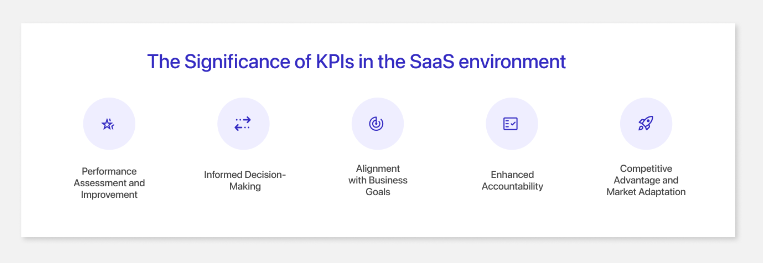
12. SaaS and the Metaverse
The metaverse, a collective virtual shared space, is emerging as a new frontier for businesses. SaaS has a pivotal role to play in building and powering this immersive digital world. From creating virtual environments and experiences to managing digital assets, SaaS solutions can provide the foundation for metaverse experiences.
Potential applications include virtual collaboration tools, digital marketplaces, and virtual events. As the metaverse continues to evolve, we can expect to see a surge in SaaS offerings tailored to this new reality.
13. Sustainability in SaaS
Environmental concerns are increasingly influencing business decisions, and the SaaS industry is no exception. Customers are becoming more conscious of the environmental impact of the products and services they consume.
SaaS companies can differentiate themselves by adopting sustainable practices. This includes reducing energy consumption through data center optimization, minimizing waste, and promoting responsible resource management. Additionally, offering environmentally friendly SaaS solutions, such as carbon footprint tracking tools or sustainable supply chain management platforms, can appeal to eco-conscious customers.
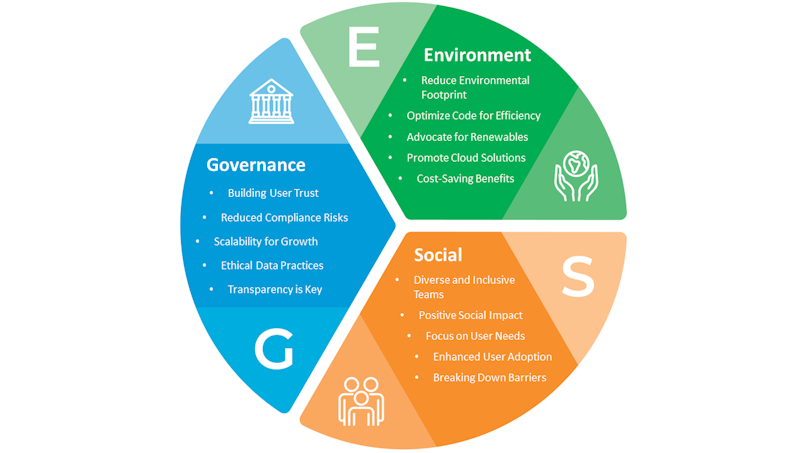
14. Integration with Web3
The rise of Web3, driven by blockchain technology, is transforming numerous sectors, including SaaS. Blockchain's decentralized, secure, and transparent foundation can help SaaS providers unlock new possibilities and enhance their offerings.
Cryptocurrencies, a key component of Web3, are becoming a viable option for secure payments, loyalty programs, and innovative access models within the SaaS ecosystem. Blockchain's ability to create immutable records and automate processes through smart contracts positions SaaS businesses to optimize operations and build stronger customer trust.
Potential applications include:
Secure data management
Transparent supply chain management
Loyalty programs
Decentralized applications (dApps)
Cryptocurrency payments
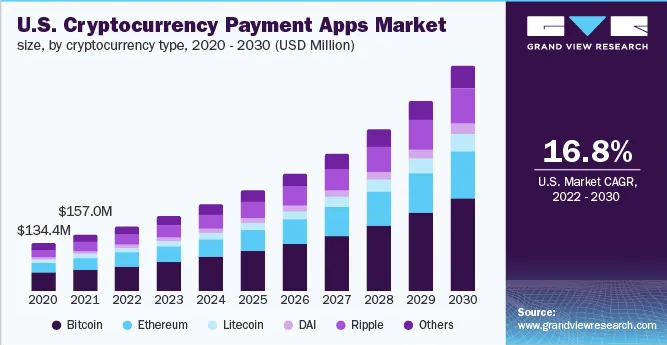
Crypto payment apps market (source)
While the integration of Web3 into SaaS is still in its early stages, it holds immense potential for transforming the industry. With these technologies, SaaS providers can gain a competitive advantage and create innovative solutions that meet the evolving needs of their customers.
Conclusion
SaaS will undoubtedly be an exciting space in 2024. As the industry adopts a broad spectrum to modern tech like machine learning and low-code development, we’re bound to experience a paradigm shift in the way businesses and customers use services.



